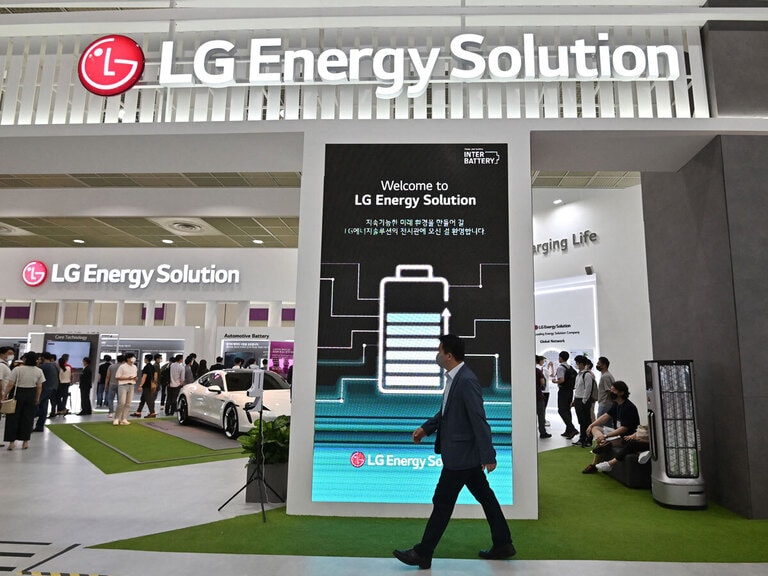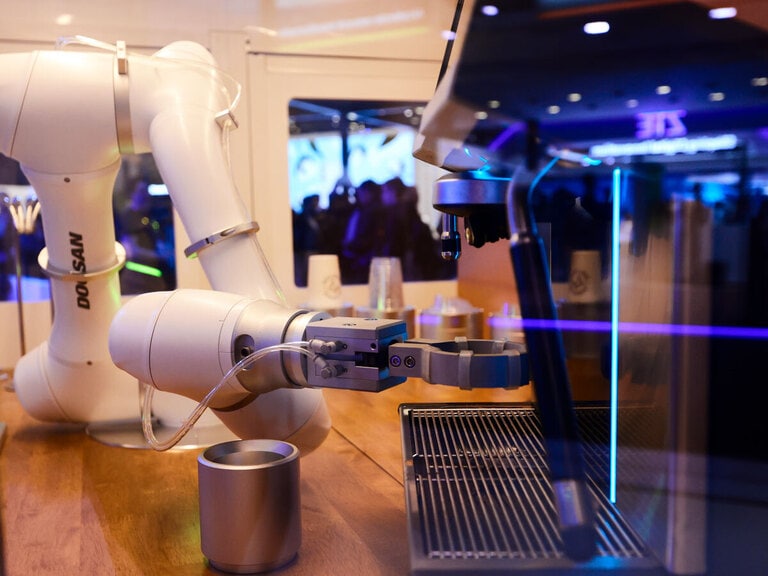The average American car-owner spends 10 weeks per year driving. Research from ARK Invest suggests that, by unlocking this lost productivity, autonomous taxis could increase global GDP by more than any other innovation. McKinsey estimates that autonomous vehicles will reach price parity with manual cars in time, but the technology has provoked resistance in cities where it currently operates.
- ARK suggests autonomous taxis could add $26trn annually to global GDP by 2030.
- McKinsey envisages price parity with traditional automobiles.
- Tesla’s share price has doubled so far in 2023.
ARK Invest says that autonomous taxis — or robotaxis — could have a greater impact on GDP than any other innovation in history.
A July report published by Cathie Wood’s innovation-focused investment firm claims that robotaxis could add 20% to global GDP by 2030. This equates to approximately $26trn, or 26% of the current size of the US economy.
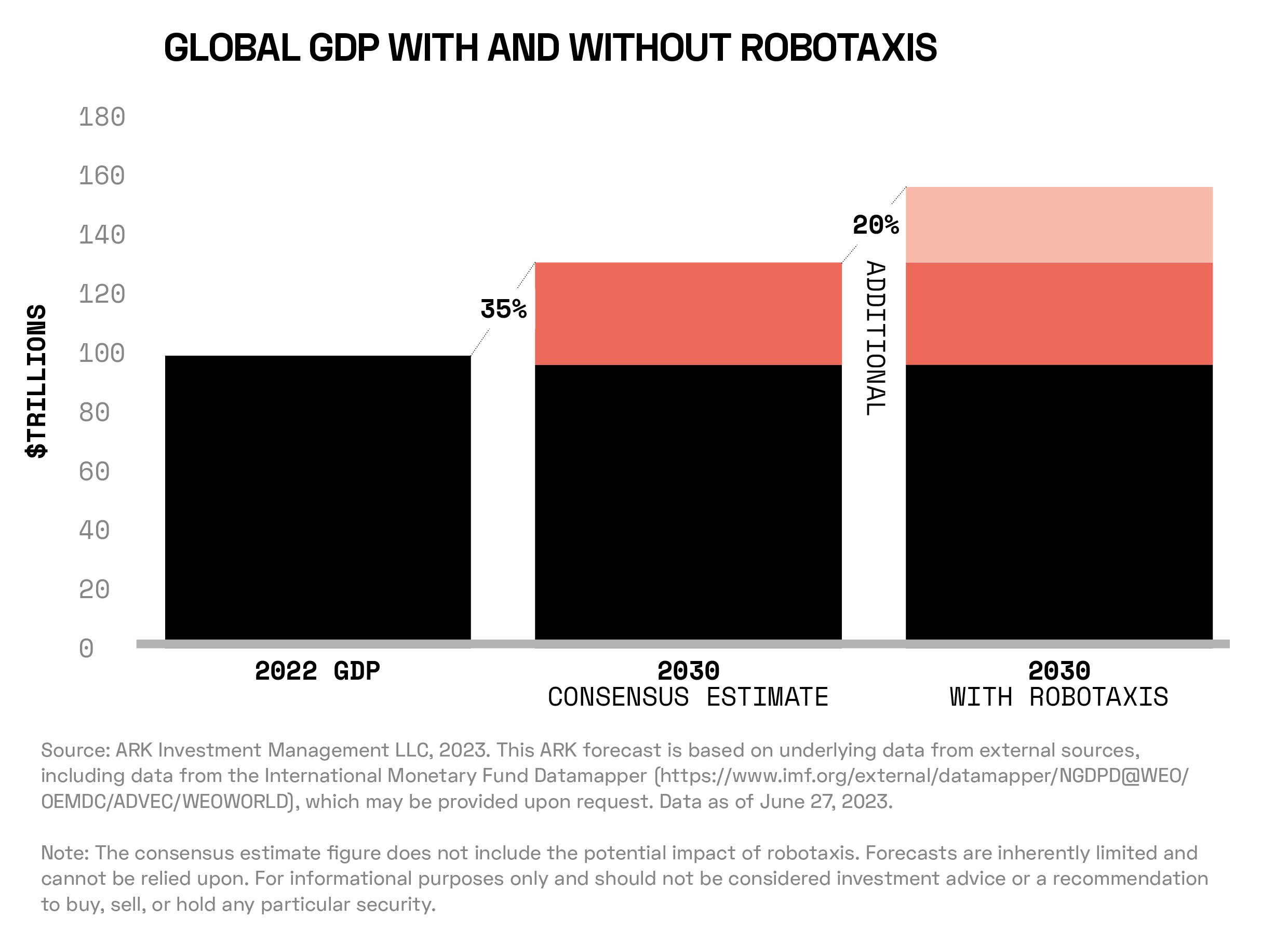
The analysis includes an assumed $3trn in economic gains from preservation of life. In another report in April, ARK researchers estimated that road accidents, 90% of which are caused by human error, cost the US economy $50bn per year. While this is obviously a net benefit in terms of human outcomes (up to 35,000 lives saved in the US, and up to 1.5 million globally), in baldly economic terms these gains will be mitigated by a drop in economic activity from vehicle repairs, hospital stays and insurance takings.
It is the increased productivity that passengers of autonomous taxis stand to enjoy that will unlock the majority of the economic benefits. The July report states that the average car-owner in the US spends over 420 hours per year driving, equivalent to 10 working weeks. Unlocking that time for work, or economically productive leisure activities like streaming, could generate an extra $17trn in global GDP, said the researchers.
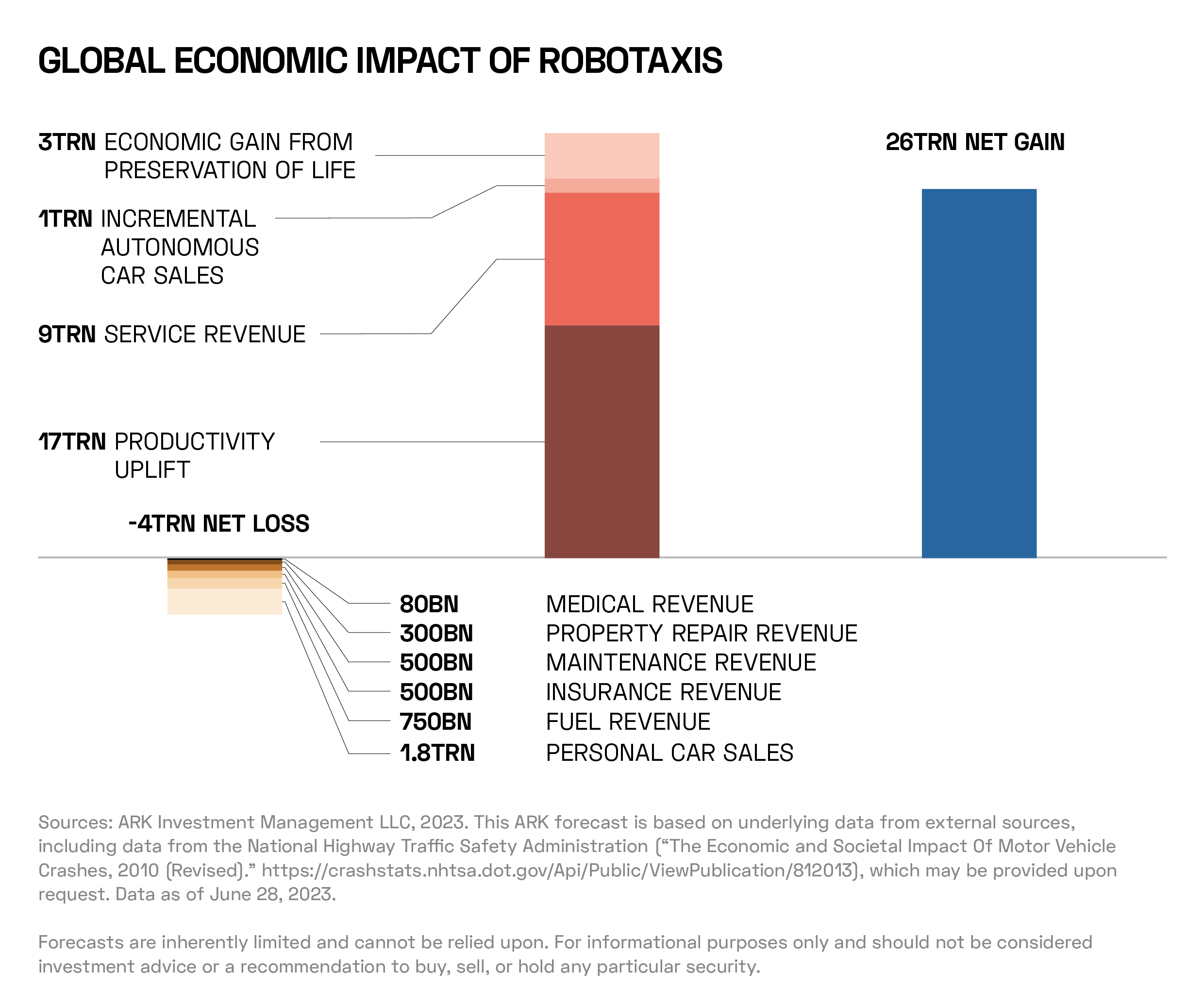
The research also suggests robotaxis could add 2-3 percentage points to global GDP per year, which by 2030 would be more than the combined impacts of the steam engine from 1850–1910, robotics from 1993–2007 and IT from 1995–2005.
Pricing and Demographic Tailwinds
According to a January 2022 report from strategy consultancy McKinsey, there are four variables that will impact the adoption of robotaxis and roboshuttles: regulatory frameworks, technological readiness, business-case attractiveness and consumer preferences.
The last of these is highly cost-dependent, but McKinsey believes that these are set to decline over time.
“Despite their additional technology costs, robotaxis could become price competitive with private nonautonomous cars and even transit services,” says the report.
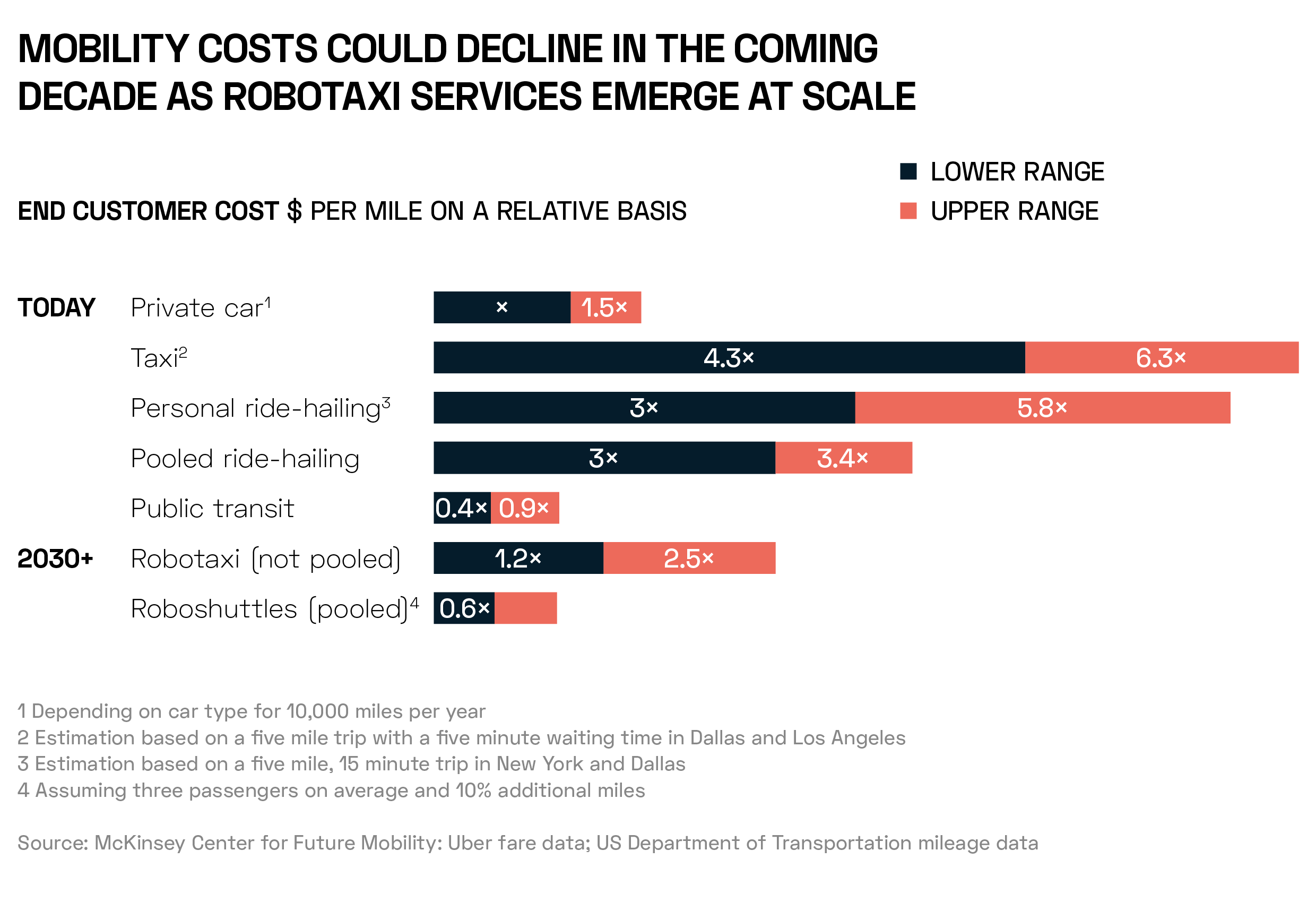
Analysis from Allied Market Research is supportive of a rapid expansion for the global autonomous taxi market. This was estimated to be over $1bn in 2023, and projected to reach $38.6bn by 2030, implying a CAGR of 67.8% during that time period. Goods transportation is expected to be the largest single segment by that point, with a projected value of $21.71bn, though passenger transportation is expected to grow faster, with a projected 74.2% CAGR, compared to goods’ 70.5%.
Roadblocks
The uptake of autonomous taxis is underway in the US, though it is meeting with some resistance and challenges. San Francisco, which has long been a hub of autonomous taxi development and deployment, granted 24/7 licences to Alphabet’s [GOOGL] Waymo and GM’s [GM] Cruise earlier this year.
Activists in the city, however, oppose the vehicles, pointing to unique drawbacks of self-driving technology. For example, they are prone to stop erratically or pull up in traffic, and the Financial Times reported that one had recently become stuck in wet cement.
Anti-car activists Safe Street Rebel encouraged San Franciscans to bring the vehicles to a halt during a “week of cone” last summer, by exploiting a technological fault that causes robotaxis to stall if a traffic cone is placed on their hood.
On 3 October, a woman was hit by a human-driven car in San Francisco and thrown into the path of a Cruise autonomous taxi, according to a series of statements from Cruise on X. The vehicle then braked, trapping the woman’ s leg underneath one of its tires. Rescuers had to use the jaws of life to free her from underneath the vehicle, after Cruise first disabled it.
San Francisco is one of three US cities where autonomous taxis are currently operational, with the other two being Phoenix, Arizona and Austin, Texas. As of late August, another 14 cities had allowed testing of the technology, according to Axios.
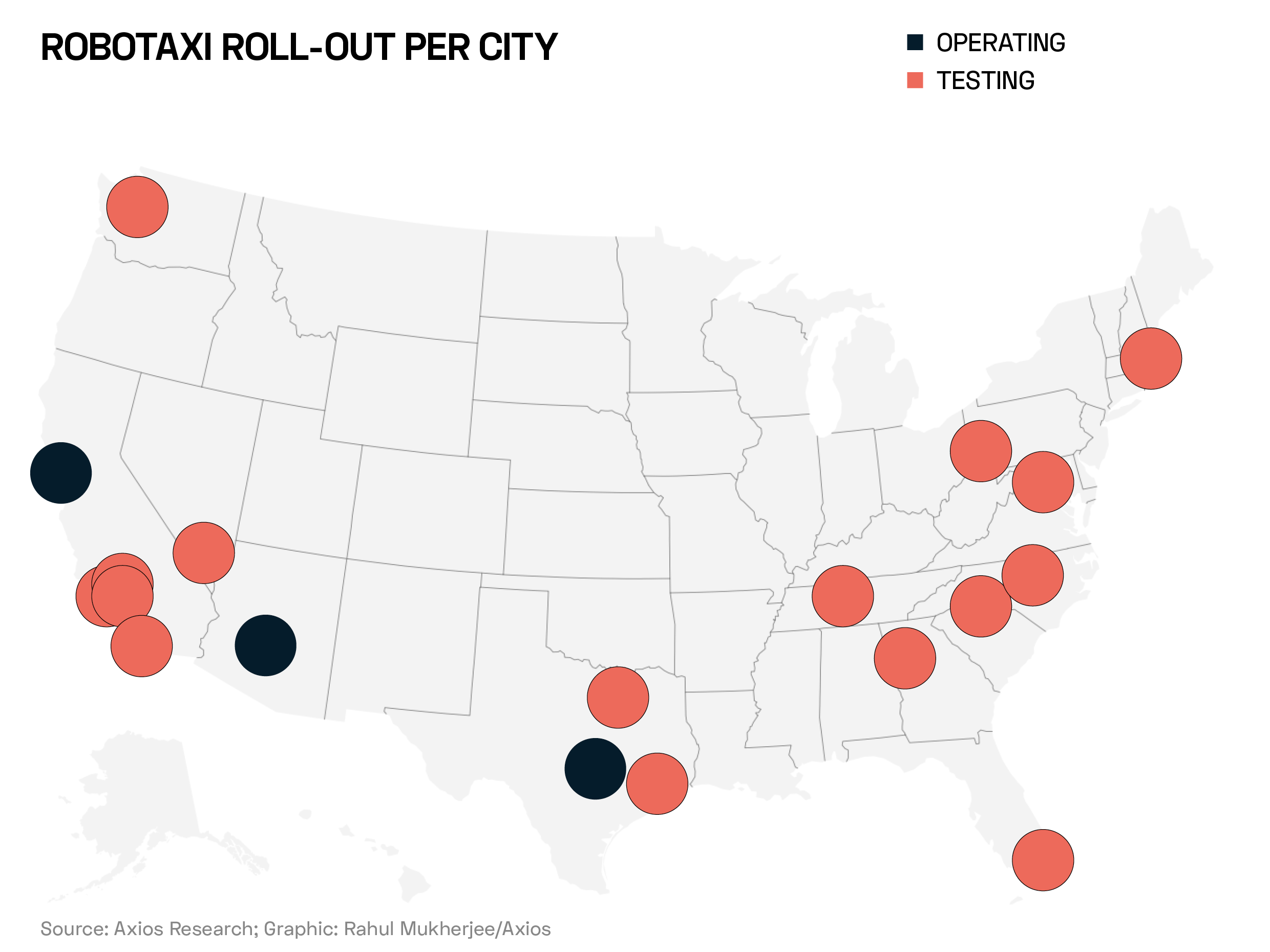
Will Flying Taxis Take Off?
Notwithstanding the economic benefits of autonomous taxis, ARK anticipates that the vehicles will cause a threefold increase in road congestion over the next 5–10 years. In this sense, the logical next step in taxi evolution could be to take to the skies. An August report from ARK claims that “the benefits of affordable, low-emission, alternative air-born transportation will become an imperative for communities”.
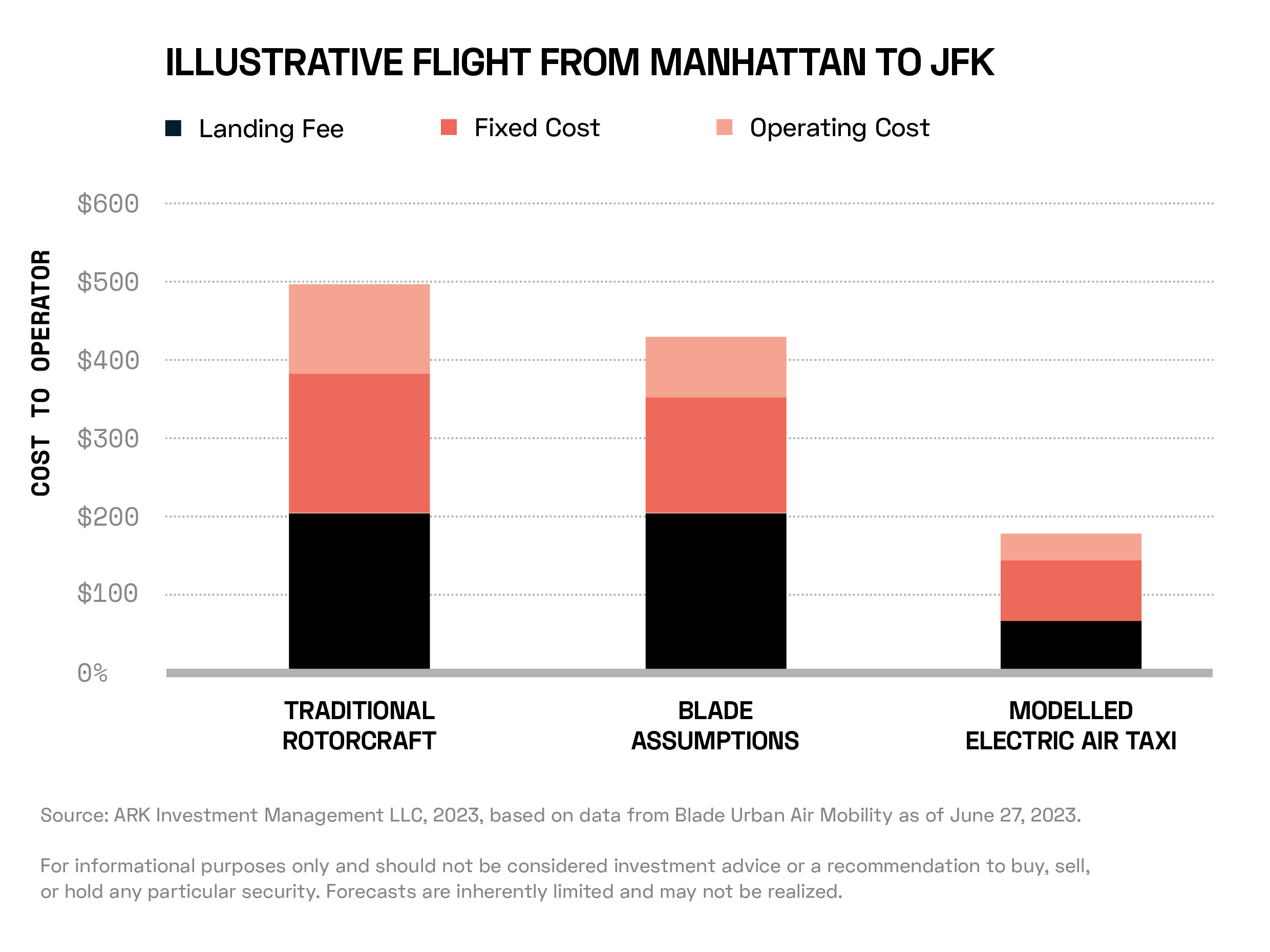
The report states that three or more electric air taxi firms “are likely to launch commercially in 2025”.
How to Invest in Autonomous Taxis
Tesla [TSLA] is a stand-out name in the world of autonomous driving, and its robotaxi business underpins ARK’s thesis that the stock will be worth $2,000 per share in 2027. ARK anticipates that, in this scenario, 64% of the firm’s EBITDA will derive from its autonomous taxi arm sometime that year. Tesla stock has soared over 112% in 2023.
GM’s autonomous taxi service Cruise announced in April that it was on track to reach $1bn revenue by 2025 and $50bn by 2030. Analysis from Forbes suggests that hitting $1bn in revenue would only require the firm’s cars to displace 0.01% of all the miles driven in the US every year. “Profitability remains a whole other matter”, however, according to Senior Contributor Sam Abuelsamid, with $1bn of revenue calling for 5,500 vehicles on the road — each costing approximately $50,000 to build. GM stock has fallen by 7% year-to-date.
Eric Sheridan of UBS expects Waymo’s revenue to reach $114bn by 2030. Waymo falls under Alphabet’s ‘Other Bets’ division, which generated $285m revenue in the second quarter of this year. However, Alphabet’s earnings release acknowledged that these revenues “are generated primarily from the sale of health technology and internet services”. Alphabet’s share price has gained 53.3% year-to-date.
The ARK Autonomous Technology & Robotics ETF [ARKQ] holds Tesla, GM and Alphabet as of 4 October, and has gained 26.3% year-to-date.
Disclaimer Past performance is not a reliable indicator of future results.
CMC Markets is an execution-only service provider. The material (whether or not it states any opinions) is for general information purposes only, and does not take into account your personal circumstances or objectives. Nothing in this material is (or should be considered to be) financial, investment or other advice on which reliance should be placed. No opinion given in the material constitutes a recommendation by CMC Markets or the author that any particular investment, security, transaction or investment strategy is suitable for any specific person.
The material has not been prepared in accordance with legal requirements designed to promote the independence of investment research. Although we are not specifically prevented from dealing before providing this material, we do not seek to take advantage of the material prior to its dissemination.
CMC Markets does not endorse or offer opinion on the trading strategies used by the author. Their trading strategies do not guarantee any return and CMC Markets shall not be held responsible for any loss that you may incur, either directly or indirectly, arising from any investment based on any information contained herein.
*Tax treatment depends on individual circumstances and can change or may differ in a jurisdiction other than the UK.
Continue reading for FREE
- Includes free newsletter updates, unsubscribe anytime. Privacy policy


